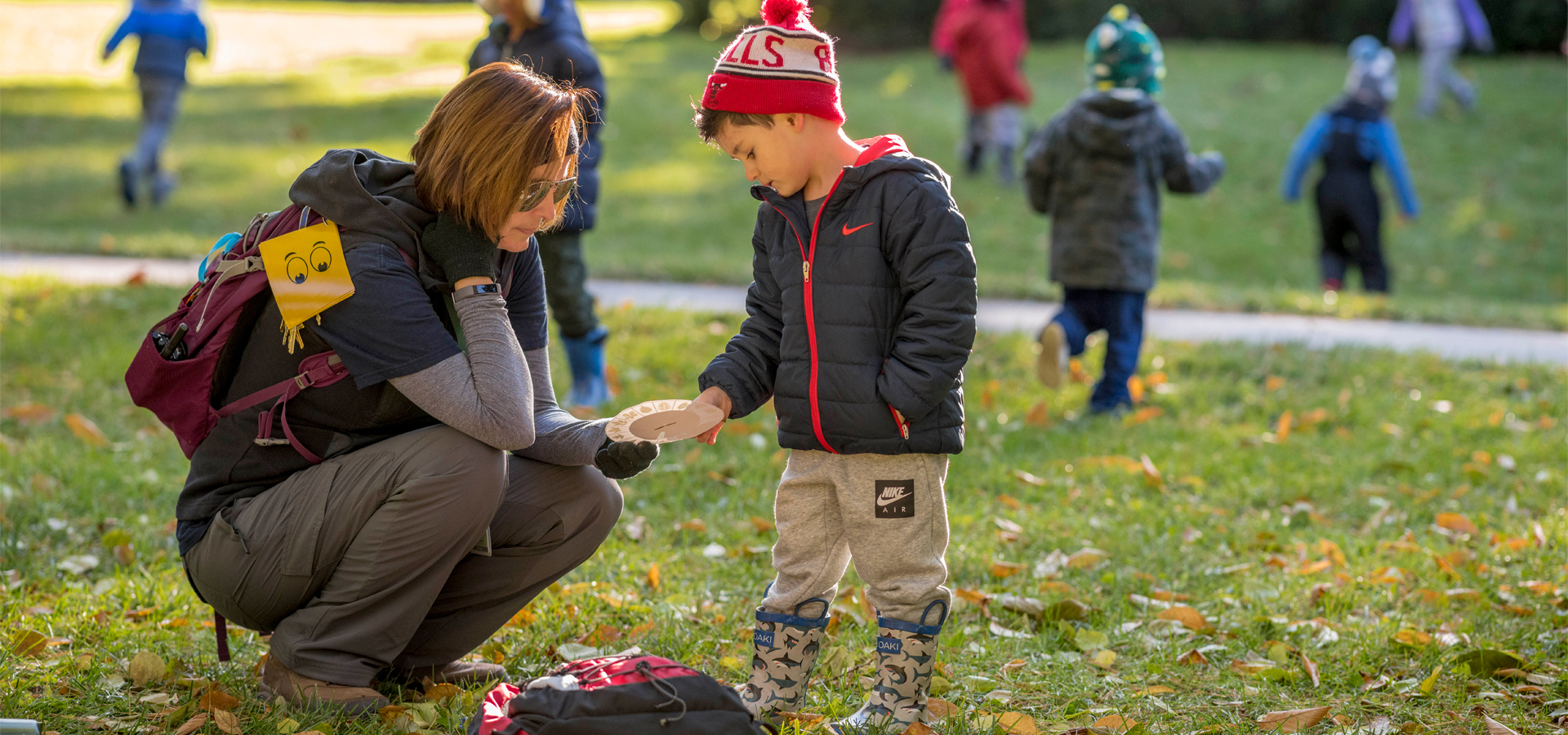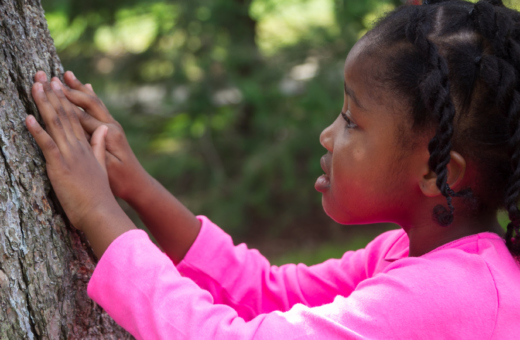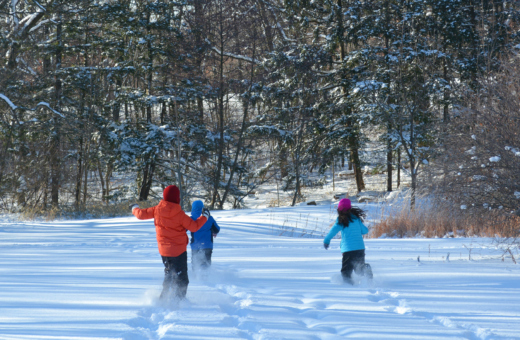January 25, 2022
Fostering a Deeper Relationship with Nature in the Early Years
by Megan Gessler, Little Trees Program Supervisor
Simple appreciation of nature–marveling at its beauty or uniqueness– is the bedrock for cultivating future stewards of our environment. Childhood memories of an urban park awakening in spring or a moment of solitude in a dense forest can last a lifetime. These moments of spending time in nature don’t just feel good, they are essential in developing an ecological identity that can lead to a feeling of kinship with the natural world.
Developing a relationship of empathy and compassion for the natural world helps children move beyond objectifying the environment — viewing it as separate or disconnected from themselves. So how do we foster children’s kinship with nature?
The key to helping children develop a true kinship with our world is by providing frequent opportunities for them to spend extended periods of time in nature. Kinship is a deep knowing that leads to a realization that we don’t live on the Earth, we live with it. It’s this relationship that will lead children to feel inextricably interconnected with plants, animals, and the land, and has the potential for them to act for the Earth in a transformative way.
Here are four simple ideas from the Arboretum’s Early Childhood education team to help children explore nature in a meaningful way:
- Initiate caring routines and rituals: Refill bird feeders or water plants. Then discuss it with children. Who comes to visit the feeders? Do the same guests appear all year? Why not? What do you do for them when it gets cold out? In what ways are you similar to the birds? What could you plant that will help feed animals or yourself? What do your plants need to thrive? Help them observe and notice the differences from season to season.
- Find sit spots: Look for a special space that you can revisit throughout the year and ask children to listen to bird calls, observe the cloud shapes, journal, or draw. What differences do they notice from visit to visit? Encourage them to take time to focus on what they see, hear, smell, and feel. Have them imagine that they are that bird or that cloud and allow quiet time for their thoughts to drift and play out a story in their heads.
- Use tools to explore the minutia: Take a magnifier or use string to outline an 18-inch circle of dirt or grass and look for all the things that move in that tiny space. Ask children, how does it move? What do you think it’s doing? In what ways are you similar? Imagine yourself living in that circle. What would you do?
- Model mindfulness: Take a moment to thank the forest before you enter or express gratitude to the frog before you release it back to its environment. Ask children how they feel when they enter a space after expressing gratitude. Do they feel a deeper connection to the plants and animals after initiating conversations with them? Allow space for children to have those conversations whether they are spoken or internal.



